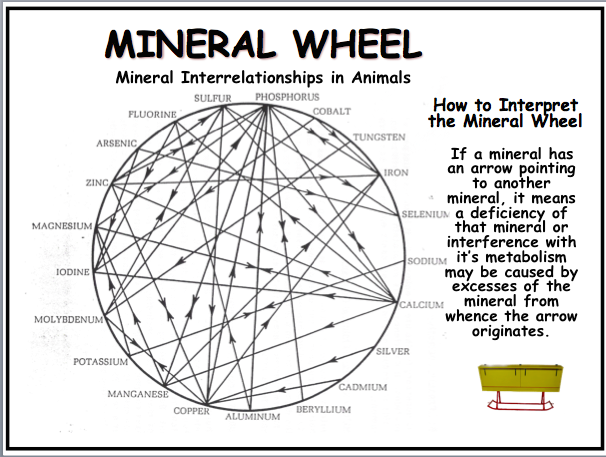Mineral Wheel - The Subtle Yet Important Relationships
Although the human body requires about 100 elements, this mineral wheel shows some of the most important elements needed by the body, and more importantly, it shows the interrelationships between the elements. This is the most complete wheel ever developed. The major minerals, electrolytic minerals, and many other trace minerals are represented here. The lines and arrows on the diagram connect specific minerals to others. Every mineral has synergistic and antagonistic counterparts. The importance of this is, if you have too much or not enough of a specific mineral, it will affect the counterpart causing a mineral deficiency or excess that may be toxic. On this wheel, an arrow pointing to a particular mineral means that an excess of the mineral may cause a deficiency of the mineral that the arrow comes from. For example, an excess of calcium can cause decreased absorption of Phosphorus, Zinc, Magnesium, and Manganese. This is the same thing that happens in farming soils. Too much or too little of any nutrient results in sick plants, animals, and humans alike. You only need to read the United Senate Document #264 to see how the mineral deficiency in plants results in the mineral deficiencies and disease in those who eat those plants. Read more about this and other health topics in Dr Wil's Book. Credit To: The Effect of Trace Mineral Balance on Nutrient Absorption by John Nitkowski, Independent Researcher in Nutrition and Degenerative Diseases - https://www.pssurvival.com/ps/health/minerals/mineral-wheel-explained_2004.pdf |

